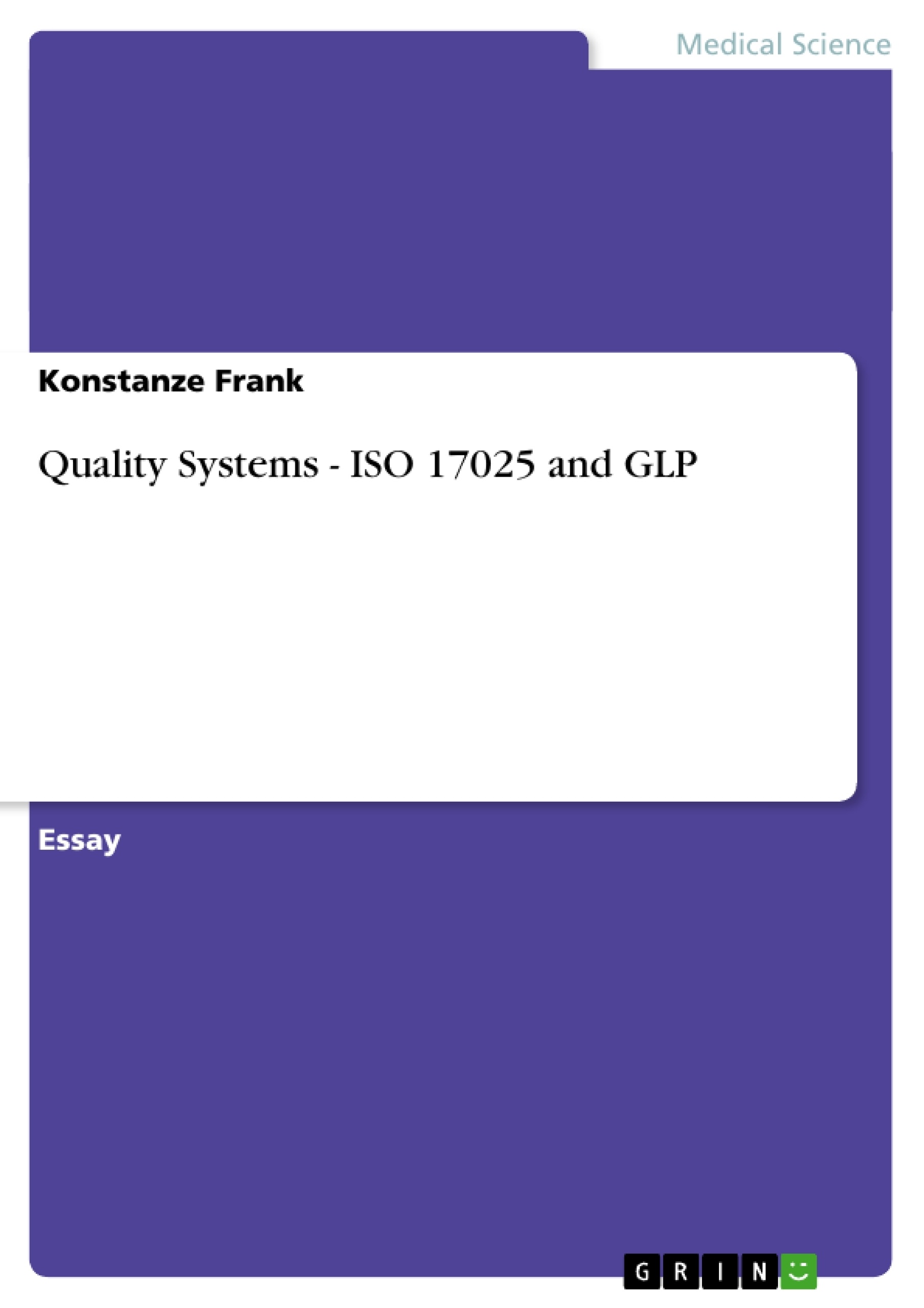An accredited laboratory according to ISO/IEC 17025 and a research facility working according to the Organisation for Economic Co-operation and Development Good Laboratory Practice (OECD GLP) series of principles, both facilities perform chemical, analytical and microbiological tests. The main difference is the types of projects that the laboratories deal with.
OECD GLP facilities conduct studies for the purpose of testing and assessing chemicals to determine their potential hazards. The GLP principles are a managing tool covering the organisational process and the conditions under which laboratory studies are planned, performed, monitored, recorded and reported. Whereas accredited laboratories are testing and calibration laboratories. They operate a quality system, are technically and scientifically competent, and are able to generate technically valid and traceable results.
There are many definitions of Quality. One possibility might be to define quality “in terms of customer satisfaction”. As there is no absolute measure hence it should be “management’s task to translate future needs of customers into quality products and services]. Therefore a ‘quality system’ can assist organisations in enhancing customers’ satisfaction. According to Andrew Waddell there are two dimensions of a quality system, a vertical and a horizontal dimension. The requirements of the vertical, i.e. technical, level are covered by ISO 17025 whereas the horizontal, i.e. managing and organisational, concept is detailed in the OECD GLP principles.
However, a comparison of both shows overlapping and/or common requirements in these international standards with unique occurrence in the two of them.
Table of Contents
Abbreviations
1 Coursework Assignment / Section 3 Quality Systems
2 Selection of Title
3 Introduction
4 Overview of common elements of ISO/IEC 17025 requirements and the OECD principles of GLP
5 Comparison of common elements of both standards
5.1 Responsibilities, organisation and management
5.2 Quality assurance/ quality control
5.3 Documentation, recording and archiving
5.4 Facility, equipment, apparatus and test, reference and calibration items
6 Conclusion
7 References
Abbreviations
illustration not visible in this excerpt
1 Coursework Assignment / Section 3 Quality Systems
Choice of one from two titles
- Which elements of ISO 17025 and the OECD Principles of Good Laboratory Practice are common in both standards? Referring to the context in which they are applied, explain the reasons why the elements are unique in their individual standards.
- For a specified quality system, identify the stakeholders (sometimes known as “interested parties”). For three of these stakeholders, list and discuss briefly their expectations and requirements.
Describe how these stakeholders’ needs could be translated by an organisation into specific objectives. What processes and mechanisms for measuring their effectiveness would you expect to find?
2 Selection of Title
For a thorough review of the quality system of an accredited laboratory (ISO 17025), a GLP testing facility (OECD) and their overlapping issues the first title was chosen:
- Which elements of ISO 17025 and the OECD Principles of Good Laboratory Practice are common in both standards? Referring to the context in which they are applied, explain the reasons why the elements are unique in their individual standards.
3 Introduction
An accredited laboratory according to ISO/IEC 17025 [1] and a research facility working according to the Organisation for Economic Co-operation and Development Good Laboratory Practice (OECD GLP) series of principles [2], both facilities perform chemical, analytical and microbiological tests. The main difference is the types of projects that the laboratories deal with [3].
OECD GLP facilities conduct studies for the purpose of testing and assessing chemicals to determine their potential hazards. The GLP principles are a managing tool covering the organisational process and the conditions under which laboratory studies are planned, performed, monitored, recorded and reported. Whereas accredited laboratories are testing and calibration laboratories. They operate a quality system, are technically and scientifically competent, and are able to generate technically valid and traceable results.
There are many definitions of Quality. One possibility might be to define quality “in terms of customer satisfaction” [5]. As there is no absolute measure hence it should be “management’s task to translate future needs of customers into quality products and services [5]. Therefore a ‘quality system’ can assist organisations in enhancing customers’ satisfaction [6]. According to Andrew Waddell [4] there are two dimensions of a quality system, a vertical and a horizontal dimension. The requirements of the vertical, i.e. technical, level are covered by ISO 17025 whereas the horizontal, i.e. managing and organisational, concept is detailed in the OECD GLP principles [4].
However, a comparison of both shows overlapping and/or common requirements in these international standards with unique occurrence in the two of them.
[...]
- Citar trabajo
- Konstanze Frank (Autor), 2004, Quality Systems - ISO 17025 and GLP, Múnich, GRIN Verlag, https://www.grin.com/document/41153
-

-

-

-
¡Carge sus propios textos! Gane dinero y un iPhone X. -

-
¡Carge sus propios textos! Gane dinero y un iPhone X. -

-
¡Carge sus propios textos! Gane dinero y un iPhone X. -

-
¡Carge sus propios textos! Gane dinero y un iPhone X. -

-
¡Carge sus propios textos! Gane dinero y un iPhone X.

